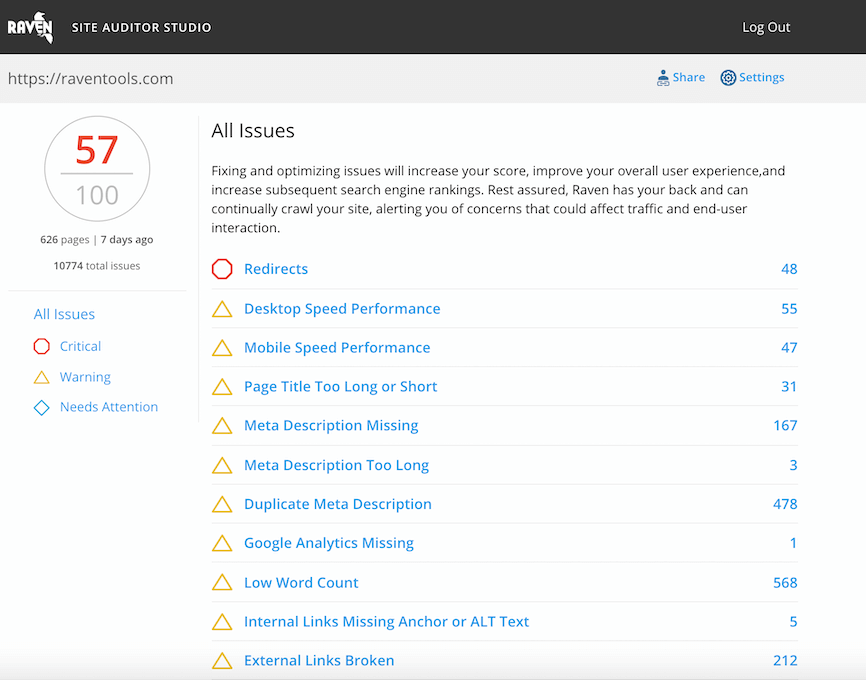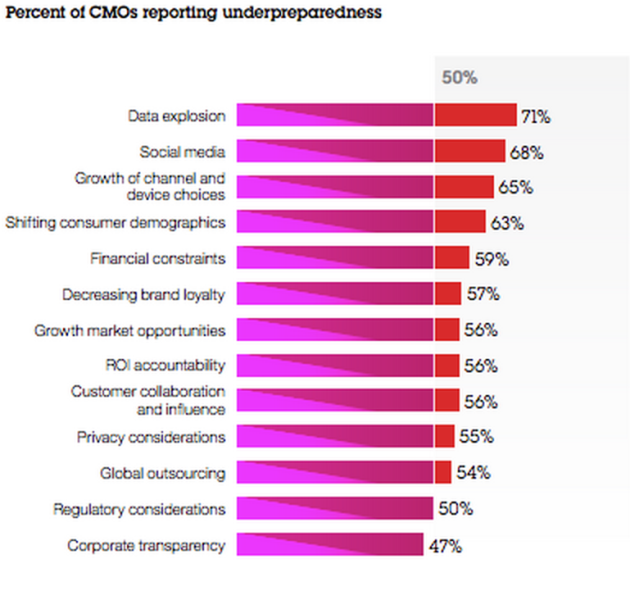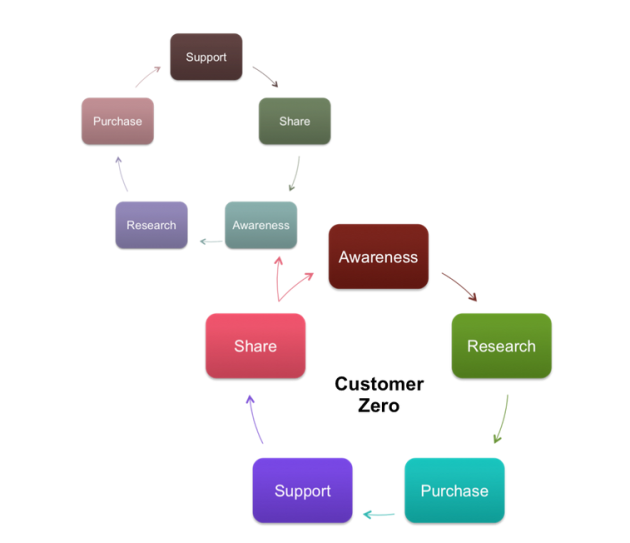How many times have you contacted a bank/airline/retailer/software provider with a question only to be deflected to some other department? You get there only to have to start from scratch and explain your situation from the beginning. If you’re lucky, it ends there. Often it doesn’t.
It’s happened to all of us, and it’s exactly this type of experience that breeds frustration in customers. Every moment like this slowly erodes your loyalty in that service or brand.
If you take an honest look at your own organization – how many types of these interactions do you think you’d find?
Organized for Failure
This frustration isn’t unique to any one industry. We’re all guilty. In fact, it’s so common that most of us don’t even acknowledge, or aren’t aware of, how broken this experience really is.
Like the frog that gets boiled in the water, we’ve let this happen by organizing the customer experience by arbitrary internal borders and tasks. Companies are divided by channels, and managers run them accordingly. It’s totally common for one hand to be blind to what the other is doing. It’s sadly even more common to find no collaboration between groups and no overall steward for the customer.
We’ve put our front line employees in ineffective positions, tied their hands and left them powerless. And we’ve wasted resources while potentially losing customers.
Customers experience your brand in personal moments and interactions – not the arbitrary seams you built into your company. They don’t know that they’ve reached the wrong department. They don’t understand why your Twitter team refers them to a 1-800 number. It’s not their job to be concerned with how your systems do (or don’t) talk to each other. They just know how it makes them feel.
How Did This Happen?
When the Internet first started to reach critical mass, there was widespread panic that we would all stop talking to one another and move down into the basement. With the advent of social media, we began interacting with one another at a much greater volume – and much more quickly – than ever before.
Businesses have spent so much time focusing on new tools that we haven’t been paying attention to the impact these new methods have had on how we think, communicate and engage both internally and to customers.
Our systems and communications aren’t integrated. Disconnected data sources keep employees from looking holistically at our customer. Teams are often competing against each other rather than working together. Priorities and objectives are not cross-functional and processes are cumbersome and prohibitive. Bye-bye, business analytics. Bye-bye, meaningful insights.
Incremental change can only occur for so long before you have to take a step back and notice the transition that has occurred. That’s where many of us are now.
It’s time to step back and survey the entire landscape. Wrap your arms around where you are – and where your customers are. Identify the gaps. Big picture stuff. Have we all been moving in the same direction? Likely not.
IBM’s recent CMO survey highlights where leaders are feeling most unprepared for the coming years – areas like big data, social media and channel and device choices. It’s no coincidence that these issues align directly with the customer experience.
The Solution
The trends and surveys are telling us as managers and leaders what we already know to be true as consumers. Expectations are shifting, and companies who adapt to truly put customers first will win.
How? Act like a customer. Approach your marketplace in the same ways your customers experience your product. Focus on the journey and overall experience that cuts across multiple touchpoints. Brick and mortar. Mobile. Tablet. Social. Telephone. Pay attention to how these work together and what that feels like for the customer. This will force you to fully integrate your product, marketing, customer service, social efforts – and more importantly, the systems that support all of these tasks.
Here’s how to get there, step by step:
Develop data-driven customer personas
You’ve likely done this in the past. If you have, awesome. It’s probably time to update them. If you haven’t, this is a great place to start. The key is to using a data-driven approach, not your gut (which is littered with assumptions). Start with what you know. Look for data goldmines you’ve already got access to – your CRM databases, social/site analytics and social listening tools. After that, break out a survey tool and look for more.
Once you’ve gathered your data, the work really begins. It’s time to get intimate with Excel and SPSS. Cluster your data to focus on distinct groups of people. Look for clusters around points like loyalty, affluence, customer lifetime value, demographics and behavioral information. Couple these clusters with qualitative interviews to develop customer profiles. Get to know them! Figure out who they are, how they think, what they do and what they care about. Name them. Make them real.
Map the customer journey
The customer journey isn’t a linear path. Take, for example, this simple illustration of a customer lifecycle. You’ll see it’s a cycle more than anything. Any one customer can cycle through over and over again, all the while instigating others to begin the cycle themselves.
The key to closing the gap between your social efforts and your overall customer experience lies in this step. It’s important to understand how your customers (prospective and otherwise) are interacting in social channels during all phases of this journey. The personas you developed previously will help a great deal here! Take it a step further and think of each of the steps in the cycle as a distinct problem your customer is trying to solve. This way, you can help them progress to the next stage.
Conduct touchpoint analysis
Evaluate your customer journey for pain points and moments of truth. Your interviews and social listening can help you figure out where these are – but so can your analytics. Look for places where people are dropping out of the funnel or stalling in the process. Triage these areas to stop any bleeding you might find. Then dive deeper, identifying ways to improve the customer’s experience with you.
Measure your progress
A vibrant measurement framework is more than a dashboard or a spreadsheet. Think of this more as a practice you build internally. Consider who your customers are and the moments they’ll need to hear from you. Consider not only what they will find helpful and interesting, but also what you want to communicate up and out from your efforts.
Appoint a customer champion
Here’s the thing, though: You can do all of these things right and still fail. If the work goes nowhere, or sits on a shelf somewhere, nothing will actually change. The customer needs a champion and advocate on the inside. If no one person ushers the entire customer experience, then ultimately it’s impossible for an organization to be experience-driven. Without accountability and leadership, there can be no results. Larger organizations will have entire departments for this, smaller ones will have individuals. Regardless, the customer experience cuts across all of the teams in a company and so must this role.
Organize for Success
Social media is not a customer success strategy. It’s only a part of the customer experience and a part of operating your business.
When you organize for success, taking into account all the channel within the customer journey, the benefits are numerous for both your business and your customer (which is, ultimately your business).
You’ll find with a better view on your customer, your organization will begin to think customer-first. Employees will advocate on customers’ behalf when they are empowered with insights. Processes will become more efficient and thoughtful as systems start working together. The magic really starts happening when your customers’ benefit is realized. Loyalty begets advocacy, and your marketing starts to scale in beautiful and organic ways.

Analyze over 20 different technical SEO issues and create to-do lists for your team while sending error reports to your client.






Totally agree! We started using personas when working with new clients and it’s really helped them and us reach their customers far more effectively!
That’s awesome Jeremy – seeing more and more groups taking advantage of this tactic. Would be curious to hear what you used to develop the personas for them? (data sources I mean…search? social? CRM? etc..)
We did 6 or 7 posts earlier going through all the steps we used in house to build our personas. It’s a mix of business questions, social, search and common sense 🙂
Awesome – thanks for sharing that Jeremy. I can’t wait to dig in!!